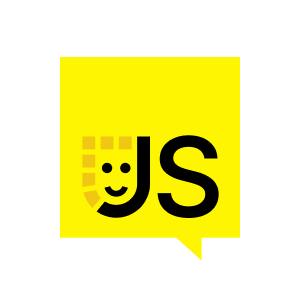Quick, what is the quickest way to bring your product to the app stores? In today's landscape, trying to get into the app store can mean spending weeks deciding what tool to use and then rewriting your entire app. But the web, and mainly Capacitor, can simplify that. Take your existing web app, add Capacitor to the mix, and you have a native app that's ready for the stores! Let's see what's possible Capacitor and why it can help you ship faster.
Maximum Efficiency: A Primer on Capacitor
FAQ
Building an app for multiple platforms involves creating separate UI designs for different device sizes and types, managing unique design patterns and tools for each platform (iOS, Android, web), and addressing the limitations of cross-platform solutions that may not fully support all platforms equally.
Capacitor is a cross-platform solution that allows developers to use the same code across iOS, Android, and web platforms. It packages a web app into a native shell, enabling access to native device features and third-party SDKs while simplifying the development process with a unified TypeScript API.
Capacitor integrates with native device features by packaging the web app into a native shell that has access to native APIs. This allows developers to utilize native SDKs on iOS and Android, and JavaScript SDKs on the web, seamlessly blending web and native components.
To set up a Capacitor project, install the necessary packages using '@capacitor/core' and '@capacitor/cli', initialize the project with 'npx cap init' to create a config file, and then add iOS as a native platform using 'npx cap add iOS'. Finally, use 'npx cap open iOS' to launch the project in Xcode.
Yes, Capacitor can handle seamless UI updates by connecting the app to a development server using live reload capabilities. This allows developers to make changes to the UI components and see them updated in real time on both native and web versions of the app.
Capacitor offers the advantage of utilizing standard web technologies and existing libraries, a unified API for all platforms, and seamless integration with native features. This reduces complexity and allows for a more consistent user experience across iOS, Android, and web platforms.
Video Summary and Transcription
Building an app can be challenging, but Capacitor allows code sharing across web, iOS, and Android. Packaging an app involves configuring plugins and modifying the project in Xcode. The app can be deployed to an iPhone and access typical dev servers.
1. Introduction to App Building and Capacitor
Building an app can be surprisingly challenging. You have to learn the tools and programs, scaffold the app, build the UI, and handle different device sizes and types. Cross-platform solutions can help, but some are limited. Capacitor allows sharing code across web, iOS, and Android by packaging the web app in a native shell.
So, hello. I didn't expect to see you all here. We're—if I'm here, that means we're probably building an app, right? Now, have you ever actually gone ahead and built an app? It's surprisingly challenging. Not only do you have to learn the tools and programs to actually go ahead and build the app, then you've got to go ahead and start scaffolding out the app, figuring out where all your data's coming from, actually build out some of the UI, and then you have to go ahead and build out more UI.
Sometimes some UI is contextual. Sometimes it's only going to be shown on certain device sizes. Sometimes it's only going to be shown on certain device types. You have to build the UI again. Then you have to build some more UI. Even though you are building for mobile, sometimes we have larger form factors, like a tablet that needs adjusted UI to fit that scale and that dimensions that our users are used to working with.
Now, imagine doing this once. Challenges arise. We now need to go ahead and do this two additional times to make three UI designs for our users. This is not ideal. All these platforms, whether it's iOS, Android, and the web, have their own common design patterns and their own tools and techniques for building out an app. There are ways to alleviate this. We could go ahead and use a popular cross-platform solution. The only problem is that some cross-platform solutions are not as cross-platform as they advertise. For instance, some of the ones that people are probably familiar with only focus more or less on iOS and Android. The web, it's kind of an afterthought, and even then, it's still a limited version of the web, not being able to use existing libraries that you may know and love, for the fact that it now needs to exist in this kind of weird pseudo-web context, but also be able to run in native. It's not ideal. The more ideal solution would be have something where you could have your web code, your iOS code, and your Android code, all coexisting and being able to share the components across all of them. I'm here. I'm probably going to be talking about it. So we're going to be talking about Capacitor, which is the cross-platform solution which allows us to share all of our code across all the platforms.
Now how this works is a fascinating technical deep dive, but to kind of summarize it, Capacitor works by taking your existing web app and packaging it up in this native shell. Now this native shell has access to all of the same native features that any of the other cross-platform solutions have, but also allows you to integrate with the native device features and third-party SDKs pretty seamlessly. So if you're deploying to iOS, you can access the native SDKs available there, same way with Android. And on the web, we're able to provide either a fallback or utilize JavaScript SDKs that exist there. Now, the way this is done is through a very complex kind of solution of parsing out JavaScript code, passing it to a native runtime, but that is kind of beyond the point.
2. Packaging and Configuring the App
The APIs that you use to target the status bar or the launch image are all done through a unified API. Let's see a real example of packaging an app as an iOS app. Install the necessary packages, create a new capacitor config file, and configure plugins. Add the native platforms and open the iOS project in Xcode. We can modify the project, extend it with a custom third-party view, and mix native and web elements.
The real point is that this is all provided to you through a very simplified TypeScript API. The APIs that you use to say, target the status bar or the launch image are all done through a unified API. So that way, you're not having to deal with the complexities of how is this done in iOS? How is this done on Android? And how is this done on the web?
Now this is all well and good, but let's actually go ahead and see a real example here. So this is an app that I've been working on for a little bit. It is a blue sky client and alternative to Twitter these days. And I want to go ahead and package this up and ship it as an iOS app.
Well, there's a few ways that we can do this. First and foremost, we want to go ahead and install the necessary packages. So we're going to install at capacitor core and at capacitor CLI. This will give us access to the core runtime as well as the CLI needed to execute further commands. Now this I've already installed. So we're not having to wait for npm here, but then we can go ahead and run npx cat init. This is going to go ahead and create us a new capacitor config file, which will be our basis for configuring all of the native projects. In fact, let's take a look at what that looks like. Now, this is just a TypeScript file. You can see we are exporting this config. It has the app ID, the app name, the directory where it should be pulling in your web app and then some server information here and there for how to configure the native projects. In fact, we can go ahead and configure plugins here as well. So that way, if we wanted to just hardcode some information to a plugin, we can do it before it even has to access the native code.
So with this installed, we can then run and add the native platforms. In this case, let's install at Capacitor iOS and at Capacitor Android. So go ahead and like previous commands, install the native packages that we need from here and then we can run npx cap add iOS. Now I've already done this. So let's go ahead and just open up an iOS project. We'll run npx cap open iOS and here we are inside of Xcode. Don't be too intimidated. You can see that we have a native AppDelegate.Swift where we can take a look at some Swift code. If we want to modify this project, we can take a look at the web assets that we have going on here, our launch screen, some of our asset catalogs, and then the main storyboard for actually presenting the app. So if we want to, say, go ahead and extend this with a custom third-party view, we can do that as well and kind of mix and blend what is native and what is web. But for most of our cases, this is just a simple app.
Check out more articles and videos
We constantly think of articles and videos that might spark Git people interest / skill us up or help building a stellar career
Workshops on related topic
Tests rely on many conditions and are considered to be slow and flaky. On the other hand - end-to-end tests can give the greatest confidence that your app is working. And if done right - can become an amazing tool for boosting developer velocity.
Detox is a gray-box end-to-end testing framework for mobile apps. Developed by Wix to solve the problem of slowness and flakiness and used by React Native itself as its E2E testing tool.
Join me on this workshop to learn how to make your mobile end-to-end tests with Detox rock.
Prerequisites- iOS/Android: MacOS Catalina or newer- Android only: Linux- Install before the workshop
In this three-hour workshop we’ll address these questions by discussing how to integrate Detox into your development workflow. You’ll walk away with the skills and information you need to make Detox testing a natural and productive part of day-to-day development.
Table of contents:
- Deciding what to test with Detox vs React Native Testing Library vs manual testing- Setting up a fake API layer for testing- Getting Detox running on CI on GitHub Actions for free- Deciding how much of your app to test with Detox: a sliding scale- Fitting Detox into you local development workflow
Prerequisites
- Familiarity with building applications with React Native- Basic experience with Detox- Machine setup: a working React Native CLI development environment including either Xcode or Android Studio
Appflow is the cloud mobile DevOps platform built by Ionic. Using a service like Appflow to build React Native apps not only provides access to powerful computing resources, it can simplify the deployment process by providing a centralized environment for managing and distributing your app to multiple platforms. This can save time and resources, enable collaboration, as well as improve the overall reliability and scalability of an app.
In this workshop, you’ll deploy a React Native application for delivery to Android and iOS test devices using Appflow. You’ll also learn the steps for publishing to Google Play and Apple App Stores. No previous experience with deploying native applications is required, and you’ll come away with a deeper understanding of the mobile deployment process and best practices for how to use a cloud mobile DevOps platform to ship quickly at scale.
Contents: This workshop is aimed at beginner developers that have an existing web application, or are interested in mobile development. We will go over:- What is Capacitor- How does it compare to other cross-platform solutions- Using Capacitor to build a native application using your existing web code- Tidying up our application for distribution on mobile app stores with naming conventions, icons, splash screens and more



























Comments